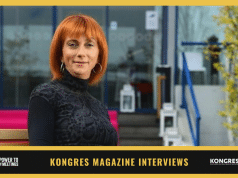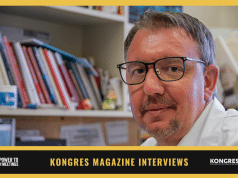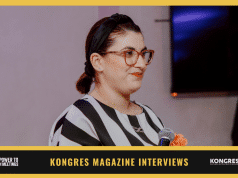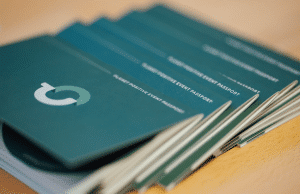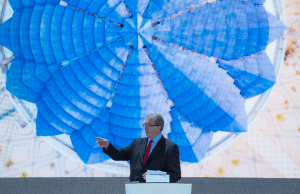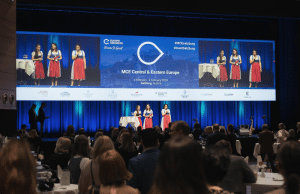To create an outstanding event turn on your imagination, use all communication tools and stick to simplicity
The LEGO Group, one of the world’s leading toy making companies that has been nurturing the imagination of both young and old for the past 84 years, is today still pushing the creative boundaries with its innovative and fresh ideas that spark creative thinking, encourage learning and provide endless opportunity for hours of fun. The secret to the world’s most famous family company’s success certainly lies in their motto: “Only the best is good enough. But providing top quality products isn’t in itself enough without a carefully designed concept and an original story that gives rise to sustainable growth; namely, the essential pillars the LEGO group built its success on are creativity and playfulness. The group’s winning approach that enabled them such business success is basically one of “creative fun”, best described by them as “play is a key element in children’s growth and development and stimulates the imagination and the emergence of ideas and creative expression”.
The principle of having fun during play can also be transferred to the process of developing good business ideas. If the business idea is built on good and attractive content that provides growth and learning potentials for everyone involved it will without doubt ensure long term successful outcomes.
Q: Can you tell us something more on how your career led you to become Event Manager at the LEGO Group?
After spending a decade in communication agencies, primarily at Euro RSCG Prague (now Havas) in the role of leader of a Corporate Communications unit, I joined a newly formed team within the Czech Football Association (CFA). I was appointed Managing Director of the CFA’s subsidiary, established to support and promote Czech youth football. Currently, I work at the LEGO Group. I’m responsible for setting and implementing PR & Event strategies in Central and Eastern Europe, the Middle East, and Africa (the CEEMEA region).
Q: What does it take to become a successful event planner? Does this profession demand specific characteristics or is just about how creatively one approaches event projects? Please state 5 strong personal characteristics that characterise a good event planner.
I think that you have to have certain personality traits and gain specific skills to become a successful event manager. I would summarize them in the following five points:
- Great communicator
- Excellent time manager able to adapt to change
- Innovative & creative with attention to detail
- Able to solve problems
- Handling stress well
Q: What marketing tools do you find most efficient in promoting an event that attracts potential stakeholders?
Seeing the character of most of our events – B2C targeting families with children aged 2 to 12, I find the following tools the most relevant to us:
An event page on the company web, including news related to the event
TV add-ons if a bigger event is involved
Promotion on location (when the venue premises can provide for high potential traffic)
Social media, including creating an event page on FB – although in this case you always have to ask yourself if you have enough resources to handle conversations on the page
PR support
Q: In your opinion how does a company’s heavily recognisable product like the LEGO brick, or, if we speak in terms of the event industry and business tourism, how can a certain destination/event venue maintain its top position?
If we speak about a destination – say, a city or country, I believe that maintaining a top position can be possible using several tactics of different types of support. It seems to me more challenging to maintain selected event premises – e.g. an exhibition centre – to keep them attractive, to innovate, to provide services and client service at a high level, to make deals with subcontractors that are beneficial to all parties, and to be sufficiently flexible. I think it is a constant series of challenges.
Q: How much focus should event planners put on sharing details of successful event stories on social media channels (Facebook, Twitter)?
I believe that it can be very beneficial if it is done properly. In order to attract people and make them view or even share stories, the shared content has to be truly attractive to viewers. Therefore, the action has to be well thought through and the content must be unique and desirable. If you manage that, you can greatly increase the event’s reach and its post-performance value.
However, I would like to add that what makes a true difference for the event and the brand is when visitors of the event actively share their experience and their insights.
Q: How do technological innovations and new communication possibilities impact upon the world of event management?
Enormously! Moreover, in a form which is truly significant for event marketing. The impact of new technologies and new communication methods – headed by social media – is simply revolutionary. Thanks to the greater reach of target groups through events, event marketing has finally become an integral and important part of marketing strategy. In addition, having a bigger reach makes events preferable if you look at cost per contact, and that is another reason why events gain in importance.
Q: How have participant expectations evolved and changed over the last 10 years. What are they mostly looking for in participating at a certain event?
Event visitors have changed from passive observers to active participants. They are now also key influencers of the event flow, as well as its communication. For example, ten years ago you prepared an event and invited people. They attended the event and saw what you prepared. After that, you emailed them pictures or you created a page where you published the photos. This communication was one-way. Nowadays, you experience two-way communication or even multidirectional dialogue with many different stakeholders involved in all three phases of event planning – 1. Pre-event 2. At-Event 3. Post-event. Such communication is much more fragmented, but it also has a greater effect. You invite people to an event via social media, where everyone can interact, share, and comment. After that, people interact during the event itself and communication continues after the event finishes.
It must be noted that the communication is not under your control anymore. On the one hand, that’s great, but on the other, you also have to watch out and be ready for unexpected situations that you might be creating.

Q: You once said that the “success criteria is no more based on the number of people who attend the event, but more importantly on the final number of people reached via the event and its communication”. So, is the story behind the event and the unique experience of participants the true fundamentals that make a memorable event?
I believe that this was also valid in the past, but now you do not have just one hundred or one thousand people to experience the story and to judge it – you can reach tens of thousands or hundreds of thousands of your existing consumers and prospects, that is, potential consumers. In that way you can design and implement an event that makes a real impact; nevertheless, you also have many eyes watching you.
Q: Today events, and especially business events, are not based on monotonous lectures and coffee breaks. Technology enables us to be more interactive, to actively participate during lectures, workshops, and to add value to discussions. Is the future of events not just transmitting the basic content, but engaging delegates to redefine and co-create events themselves?
Yes, I see it like that and it is not the future: the future is now! Visitors are already redefining and co-creating events. Their impact is tremendous. We empower attendees with shareable assets; we want them to raise their voice and actively participate on brand development and engage.
Q: What are three biggest challenges and biggest difficulties faced in terms of event planning?
From my perspective as LEGO CEEMEA Regional Event Manager, I see three main challenges:
- Complexity: We have a full spectrum of markets under our team’s leadership – from mature markets where we have offices to developing ones in which we do not have an active presence and are represented by distributors. These markets are very polarized; they have different goals and needs, and in practice every country has a different official language.
- Scalability: We have to make sure that events that we develop are relevant to different locations; therefore, we have to think how to produce them to fit diverse event premises.
- Timing: Developing event concepts for more markets that are not necessarily on one continent makes the lead-time challenging. You have to make sure that you are in line with the marketing strategy; you have to have time to develop the “big idea”. Along the way, you have many internal and external stakeholders involved, whom you have to inform about the development process and get approval from. On top of it all, you must have in mind a delivery time not only within EU countries, but in our case also, for example, for African countries.
Q: You said in a recent interview that “Creativity is a crucial element in producing outstanding events”, and since LEGO provides endless opportunities for innovative creation, how do you personally engage in keeping up with fresh ideas, and where do you take your inspiration from?
We have a good, competitive advantage in that our product is perceived as being very creative and we have stories that are created as an integral part of the product offer. This is a definite advantage. On the other hand, you also have to respect these settings and make sure that you follow the storyline and the related rules. It is crucial that the creative idea is simple, so it can be easily communicated to given target groups and not lost in translation. The best ideas are also the simplest ones, but it is so hard to invent them.
It is important not to stay in a “tunnel”. I see it as very beneficial to be part of different event forums and communication platforms. It is a great eye-opener. I am personally very happy that I got a chance to be part of the EuBEA festival, where I could see many inspirational events using new technologies and implementing brilliant ideas. I believe it is worth it for all event managers to be part of it.



